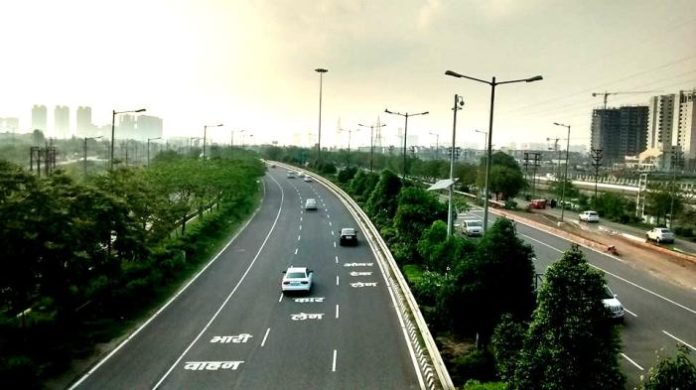A 25 km-long high-speed link, Noida Expressway connects Delhi with Noida and further to Greater Noida. The expressway was primarily built to reduce congestion on NH-2, which passes through NCR cities like Faridabad, Ballabhgarh and Palwal. Noida Expressway comprises of Sectors 44, 93B, 94 to 96, 98, 100, 104, 107, 108, 110, 127 to 129, 131, 133 to 135, 142 to 144, 143B, 146 to 149, 152 to 154, 157, 159, 161, 167 and 168.
Noida Expressway has seen a lot of market hype, and the corresponding expectations for a stretch that actually had very humble beginnings were high. A few decades ago, most of these sectors along the expressway were huge tracts of agricultural land. Over the years, these land parcels were acquired by the civic authorities and auctioned to major realty firms. The land has been allotted on leasehold basis for a period of 90 years, after which ownership reverts to the civic authority.
Several multinational companies including BPOs and IT/ITeS firms have mushroomed along the expressway. The rise in commercial spaces coupled with excellent connectivity and regular infrastructure upgrades have led to rapid residential developments in the region. Noida Expressway actually has a lot going for it in terms of economic potential, as well as connectivity:
- Road: Noida Expressway is a 6-lane road. Further, it connects to Yamuna Expressway (connecting Greater Noida to Agra) and the Delhi Noida Direct (DND) Flyway (to Delhi). The Faridabad-Noida-Ghaziabad (FNG) Expressway being constructed across Sector 143 of Noida Expressway is an added advantage to the existing road network.
- Rail: The nearest railway station to Noida Expressway is Hazrat Nizamuddin railway station (located less than 20 km away) and New Delhi railway station at a distance of 25 km.
- Metro rail: Noida Metro’s Aqua Line runs between Noida and Greater Noida and provides great connectivity to Noida Expressway.
- Air: Noida Expressway is well-connected to the Indira Gandhi International airport (located 38 km away) via DND Flyway and Mahatma Gandhi Road/Ring Road.
Housing Supply

- The sectors adjoining the Noida Expressway saw the launch of nearly 13,030 units since 2013 till Q3 2019. 2013 saw the maximum new supply (about 38%) followed by 2014 with close to 31% launches.
- Noida’s residential market saw minimal launches since 2017. Just around 600 units were launched in the last 2 years, as developers were either busy completing their previously launched projects or trying to clear their unsold stock.
- Most of the housing units are stuck in various stages of non-completion, as builders struggle to complete projects and meet timelines due to overcapacity and financial crunch. Subsequently, there are multiple litigation issues as well.
- As on Q3 2019, approx. 3,900 units are still unsold in the market, of which 89% are still under various stages of construction.

- While 21% (2,750 units) of the overall supply is ready-to-move-in, another 15% (2,010 units) is expected to hit the market in less than a year. The remaining 8,270 units are expected to take more than a year for completion, indicating that execution needs to pick up pace here.
- The significant reduction in launches clearly indicates that developers are focusing on the completion of existing projects rather than launching new ones.
Property prices along Noida Expressway rose steadily till Q1 2016, after which prices dropped marginally due to low buyer sentiment. In fact, post DeMo in November 2016, the NCR realty market has been largely passive.
The slew of reforms including RERA and GST also had a major impact on the NCR residential market. Property prices have depreciated by around 3% in the past three years with the average price in Q3 2019 being INR 5,065/sq. ft.
Outlook
The overall demand for residential properties along Noida Expressway slowly picked up in 2016. However, after DeMo in late 2016 and RERA and GST implementation in 2017, residential development activity along the expressway has been relatively slow.
With the major impact of these disruptive policies now absorbed, housing development along the expressway is will pick if more projects reach the finish line. Housing demand can improve once Noida Metro’s Aqua Line, linking the twin-cities of Noida and Greater Noida, is fully operational.
Aqua Line runs through 21 stations (15 of them in Noida and six in Greater Noida) and covers 29.7 km. of connectivity between these areas. The line between Sector 51 in Noida to Depot Metro stations Greater Noida has been operational since January 2019.
With improving connectivity and constant infrastructure upgrades, Noida Expressway can eventually emerge as a self-sustaining residential hub that will attract both home buyers and investors. However, as already mentioned, much depends on how efficiently developers are able to complete their projects to the backdrop of the liquidity crunch.



